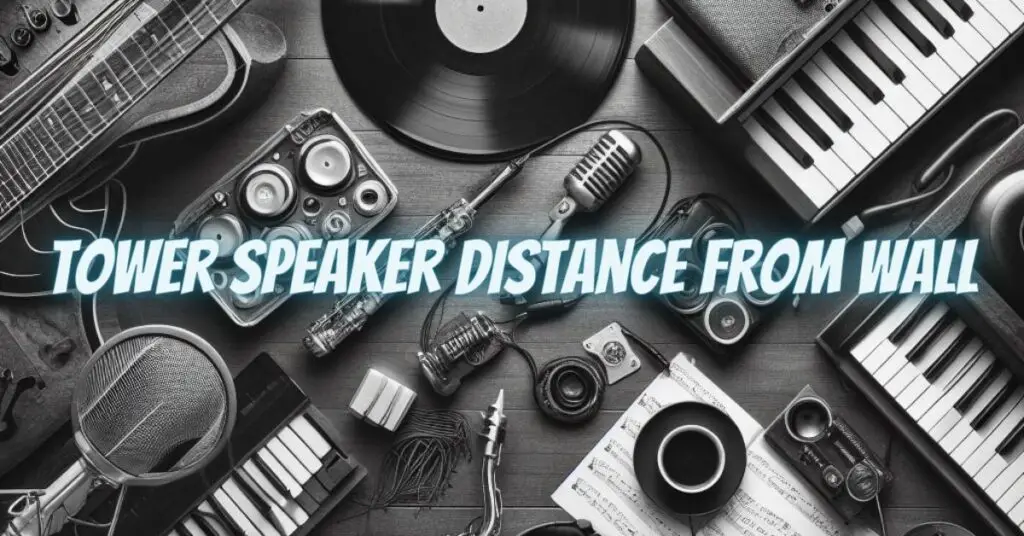Tower speakers are a popular choice for home audio systems because they offer excellent sound quality and bass response. However, to get the most out of your tower speakers, it is important to place them correctly. One of the most important factors to consider is the distance between the speakers and the wall.
Why is tower speaker distance from wall important?
The distance between tower speakers and the wall is important because it affects the soundstage and the bass response. The soundstage is the perceived width, depth, and height of the sound image. The bass response is the ability of the speakers to reproduce low-frequency sounds.
When tower speakers are placed too close to the wall, the soundstage can become narrow and constricted. This is because the reflections from the wall can interfere with the direct sound waves from the speakers. Additionally, the reflections from the wall can also boost the bass response, making it boomy and muddy.
When tower speakers are placed too far away from the wall, the soundstage can become too wide and diffuse. This is because the direct sound waves from the speakers will not be able to reach the listener’s ears at the same time. Additionally, the bass response can become weak and anemic.
How far should tower speakers be from the wall?
A good general rule of thumb is to place tower speakers at least 12 inches away from the wall. However, the ideal distance may vary depending on the size and type of speakers, the size and acoustics of the room, and your listening preferences.
If you have small tower speakers, you may be able to place them closer to the wall than if you have large tower speakers. Additionally, if you have a small room, you may need to place the speakers closer to the wall than if you have a large room.
How to find the ideal tower speaker distance
The best way to find the ideal tower speaker distance is to experiment. Try placing the speakers at different distances and angles until you find a setup that sounds the best to you.
Here are a few tips for finding the ideal tower speaker distance:
- Start by placing the speakers 12 inches away from the wall.
- Listen to music and movies from different positions in the room. Pay attention to the soundstage and the bass response.
- If the soundstage is too narrow, try moving the speakers further away from the wall. If the soundstage is too wide, try moving the speakers closer to the wall.
- If the bass response is too boomy, try moving the speakers further away from the wall. If the bass response is too weak, try moving the speakers closer to the wall.
- You can also try angling the speakers slightly towards your listening position. This can help to focus the sound and improve the imaging.
Other factors to consider
In addition to the distance between the tower speakers and the wall, there are a few other factors that can affect the soundstage and the bass response, such as:
- Speaker height. The speakers should be placed at ear level when you are seated in your listening position.
- Room acoustics. The room acoustics can have a big impact on the soundstage and the bass response. If you have a hard-surfaced room, the sound waves can be reflected and distorted. To improve the room acoustics, you can add soft furnishings, such as carpets, curtains, and rugs.
- Subwoofer. If you have a subwoofer, you can use it to augment the bass response of your tower speakers. This can help to reduce the amount of bass that your tower speakers need to produce, which can improve the overall sound quality.
The ideal distance between tower speakers and the wall depends on a number of factors, including the size and type of speakers, the size and acoustics of the room, and your listening preferences. However, a good general rule of thumb is to place the speakers at least 12 inches away from the wall. Experiment with different speaker distances and angles to find a setup that sounds the best to you.


